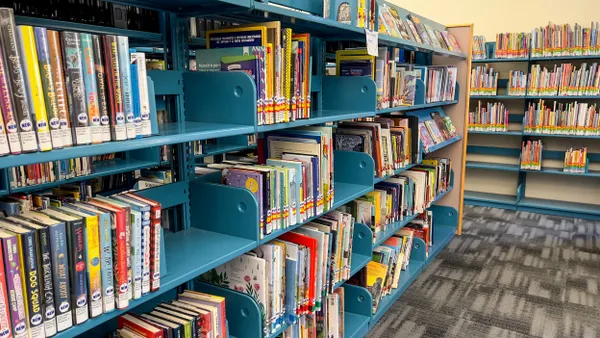Dive Brief:
- Elementary and middle school students are showing modest math recovery but are stagnating in reading compared to pre-pandemic performances, according to an analysis of MAP Growth assessment data released Tuesday by NWEA, an assessment and research organization.
- The math recovery can be seen across grades 3-8 and among historically underserved students. In reading, the lack of progress can be seen across different student races and ethnicities and in varying school poverty levels.
- NWEA researchers said the data points to a need for education leaders to keep the math recovery momentum going and for schools to double down on reading supports. To support reading initiatives, the researchers suggest that educators study what efforts led to math recovery that could be adapted to accelerate gains in reading.
Dive Insight:
The NWEA analysis is a snapshot of the organization’s latest MAP Growth assessment data, which includes testing from spring 2025, five years after the pandemic shut down in-person learning and took a sledgehammer to academic gains.
These figures are part of a larger dataset now publicly available on a dashboard that highlights national and state trends, as well as performances of subgroups of students. The dashboard is based on assessment data from 7 million K-8 students in 20,000 school districts with testing data from 2017 to 2025.
The dashboard evolved from NWEA's reports on learning recovery post-COVID-19. While math achievement was lower than reading progress in 2021, some research shows it has made a stronger recovery in more recent years as compared to pre-pandemic assessment results.
“One of the biggest lessons from navigating the challenges of the COVID-19 pandemic is how essential reliable, timely student data are for driving strategic action about student learning,” said Karyn Lewis, vice president of research and policy partnerships at NWEA, in a statement.
“Academic recovery has been slower and more uneven than expected, and research funding is increasingly constrained," Lewis said. "Schools need evidence-based insights to make decisions through this complex landscape."
Other national testing research shows similar patterns for learning recovery.
Results from the National Assessment of Educational Progress, released last month by the U.S. Department of Education’s National Center for Education Statistics, shows 12th graders who tested in 2024 had the lowest average math score ever reported for that grade. Additional NAEP data from 4th and 8th grade test-takers in 2024 showed little to no progress toward returning to pre-pandemic levels in math and reading.
Over the past few years, several states have implemented science of reading policies and practices to support literacy achievement. End-of-school-year assessment data for 2024-25 from DIBELS, the Dynamic Indicators of Basic Early Literacy Skills, found K-2 students made notable gains in their early reading skills, according to data released in July by Amplify, a curriculum and assessment company.
A report by the Center on Reinventing Public Education, released Sept. 16, said low math achievement was due to a variety of factors, including ideological differences about math instruction, grade inflation, math teacher vacancies and the inability to quickly respond to student math struggles.
CRPE, a research organization, made several recommendations to improve math performance in schools, including having Algebra I-ready policies for all students by 8th grade and explicit instructional models that incorporate real-world applications to boost student engagement.












